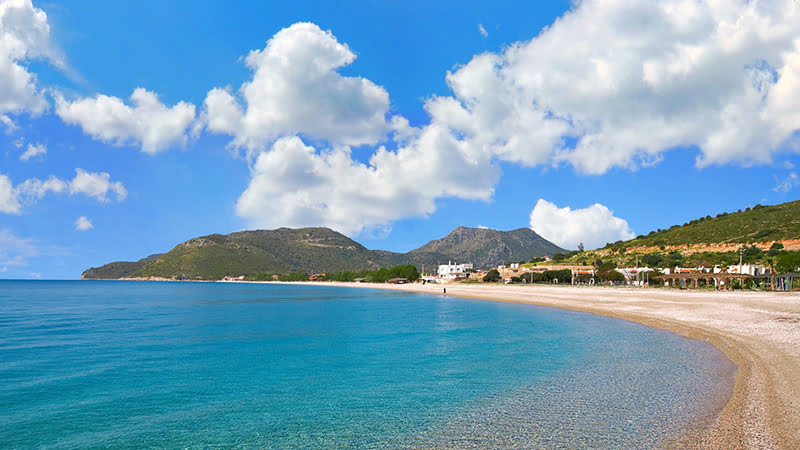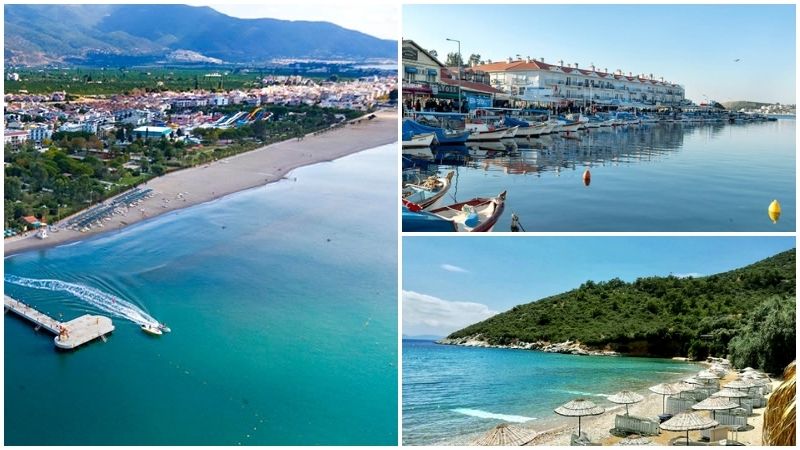Hagia Sophia - The Intersection of History and Culture

Hagia Sophia is a structure located in the heart of Istanbul and has great importance not only for its architectural structure but also for the different roles it has assumed throughout history. From the time it was first built to the present day, it has maintained its feature of being an interfaith and intercultural bridge. In this article, we will examine the history, architectural features, religious and cultural importance and current status of Hagia Sophia in detail.
Hagia Sophia was first built as a church by the Byzantine Emperor Constantine I in the 4th century. However, this first structure was severely damaged during the rebellions that broke out in 404. Hagia Sophia, which was later rebuilt by Theodosius II, was destroyed again during the Nika Revolt in 532. The structure we see today was built by Emperor Justinian I between 532-537. Hagia Sophia was considered the largest church in the world during this period and symbolized the power and magnificence of the Byzantine Empire.
The construction process of Hagia Sophia is considered one of the greatest engineering achievements of that period. Architects Anthemius of Tralles and Isidore of Miletus turned Hagia Sophia into an engineering marvel by using new techniques and materials in the construction of the structure. The marbles and stones used during the construction were brought from different geographies and increased the aesthetic value of the structure. The contributions of thousands of workers and masters who contributed to the construction of Hagia Sophia ensured the durability and magnificence of the structure.
The architecture of Hagia Sophia was shaped by an innovation and aesthetic understanding beyond its time. Designed by architects Anthemius of Tralles and Isidore of Miletus, the structure attracts attention with its central dome and spacious interior. The main dome is 31 meters in diameter and is approximately 55 meters above the ground. The large space under this dome allows the structure to create a spacious and airy atmosphere. The semi-domes and columns supporting the dome provide both structural support and create an aesthetic balance. In addition, the mosaics in the interior of Hagia Sophia contain some of the most beautiful examples of Byzantine art.
Among the architectural details of Hagia Sophia, the different types and colors of stone used inside and outside the structure are striking. Marble columns, granite and porphyry stones add richness to the interior of the structure. The mosaic decorations on the floor and walls of Hagia Sophia reflect the finest details of Byzantine art. These mosaics include religious scenes, figures of saints and various geometric patterns. These rich decorations in the interior of Hagia Sophia offer an artistic feast that visitors watch with admiration.
Hagia Sophia has not only remained an architectural wonder, but has also become a religious and cultural symbol. Hagia Sophia, one of the most important places of worship for Orthodox Christianity during the Byzantine period, fell into the hands of the Ottoman Empire with the conquest of Istanbul in 1453 and was converted into a mosque by Fatih Sultan Mehmet. During this period, some of the mosaics of Hagia Sophia were covered, but the general architecture and artistic elements of the structure were preserved.
Hagia Sophia, which was used as a mosque during the Ottoman period, also had great importance for the Islamic world. Minarets were added and Islamic worship elements such as the mihrab and minbar were placed. Hagia Sophia was an important center of worship and education during this period. Ottoman sultans paid special attention to Hagia Sophia and paid attention to its maintenance.
Hagia Sophia was converted into a museum in 1935 by the decision of Mustafa Kemal ATATÜRK, the founder of the Republic of Türkiye. This transformation ensured that Hagia Sophia was accepted as a universal cultural heritage and attracted the attention of millions of visitors every year. In 2020, it was used as a mosque again, but continues to serve visitors. Today, Hagia Sophia is an important stopping point for both worshippers and tourists.
Today, Hagia Sophia serves as both a place of worship and a tourist attraction. This dual-functional use reflects the multifaceted role the structure has assumed throughout history. Hagia Sophia is on the UNESCO World Heritage List and bears traces of both Christian and Islamic cultures. This makes Hagia Sophia a common cultural heritage not only of Türkiye but of the entire world.
Hagia Sophia is a unique structure that bears traces of different civilizations throughout history, acts as a bridge between religions, and is considered an architectural masterpiece. Having assumed different roles from the past to the present, Hagia Sophia maintains its historical and cultural importance today and continues to fascinate visitors from all over the world. This magnificent structure is an important symbol that carries traces of the past to the future and reminds us of the value of cultural heritage.
Visiting Hagia Sophia offers a unique experience for those who want to discover the historical and cultural texture of Istanbul. It is a great advantage to benefit from car rental services to easily visit other historical and cultural points in Istanbul. iZMiRCAR makes city trips more enjoyable by offering its visitors a comfortable and safe car rental service in Istanbul.
With a car you rent with iZMiRCAR, you can easily explore other important touristic points of Istanbul such as Topkapı Palace, Sultanahmet Mosque, Grand Bazaar as well as Hagia Sophia. Providing freedom and comfort in urban transportation, iZMiRCAR offers vehicle options suitable for every need with its wide vehicle fleet. Whether you are traveling alone or with your family, you can easily find the most suitable vehicle for you among iZMiRCAR's rental car options.
While traveling through the historical streets and modern avenues of Istanbul, you can enjoy the city to the fullest with the car rental service offered by iZMiRCAR. After experiencing the enchanting atmosphere of Hagia Sophia, you can take a tour along the Bosphorus with your rental car and watch the unique views of Istanbul. Have an unforgettable travel experience in Istanbul by renting a car with iZMiRCAR. Hagia Sophia, as a unique structure located at the intersection of history and culture, offers a fascinating atmosphere to its visitors. Make your explorations in Istanbul more comfortable and enjoyable with iZMiRCAR's car rental services. While exploring the history and culture of the city, you can easily visit the different beauties of Istanbul with the car you rent with iZMiRCAR.
History of Hagia Sophia
Hagia Sophia was first built as a church by the Byzantine Emperor Constantine I in the 4th century. However, this first structure was severely damaged during the rebellions that broke out in 404. Hagia Sophia, which was later rebuilt by Theodosius II, was destroyed again during the Nika Revolt in 532. The structure we see today was built by Emperor Justinian I between 532-537. Hagia Sophia was considered the largest church in the world during this period and symbolized the power and magnificence of the Byzantine Empire.
The construction process of Hagia Sophia is considered one of the greatest engineering achievements of that period. Architects Anthemius of Tralles and Isidore of Miletus turned Hagia Sophia into an engineering marvel by using new techniques and materials in the construction of the structure. The marbles and stones used during the construction were brought from different geographies and increased the aesthetic value of the structure. The contributions of thousands of workers and masters who contributed to the construction of Hagia Sophia ensured the durability and magnificence of the structure.
Architectural Features
The architecture of Hagia Sophia was shaped by an innovation and aesthetic understanding beyond its time. Designed by architects Anthemius of Tralles and Isidore of Miletus, the structure attracts attention with its central dome and spacious interior. The main dome is 31 meters in diameter and is approximately 55 meters above the ground. The large space under this dome allows the structure to create a spacious and airy atmosphere. The semi-domes and columns supporting the dome provide both structural support and create an aesthetic balance. In addition, the mosaics in the interior of Hagia Sophia contain some of the most beautiful examples of Byzantine art.
Among the architectural details of Hagia Sophia, the different types and colors of stone used inside and outside the structure are striking. Marble columns, granite and porphyry stones add richness to the interior of the structure. The mosaic decorations on the floor and walls of Hagia Sophia reflect the finest details of Byzantine art. These mosaics include religious scenes, figures of saints and various geometric patterns. These rich decorations in the interior of Hagia Sophia offer an artistic feast that visitors watch with admiration.
Religious and Cultural Importance
Hagia Sophia has not only remained an architectural wonder, but has also become a religious and cultural symbol. Hagia Sophia, one of the most important places of worship for Orthodox Christianity during the Byzantine period, fell into the hands of the Ottoman Empire with the conquest of Istanbul in 1453 and was converted into a mosque by Fatih Sultan Mehmet. During this period, some of the mosaics of Hagia Sophia were covered, but the general architecture and artistic elements of the structure were preserved.
Hagia Sophia, which was used as a mosque during the Ottoman period, also had great importance for the Islamic world. Minarets were added and Islamic worship elements such as the mihrab and minbar were placed. Hagia Sophia was an important center of worship and education during this period. Ottoman sultans paid special attention to Hagia Sophia and paid attention to its maintenance.
Hagia Sophia was converted into a museum in 1935 by the decision of Mustafa Kemal ATATÜRK, the founder of the Republic of Türkiye. This transformation ensured that Hagia Sophia was accepted as a universal cultural heritage and attracted the attention of millions of visitors every year. In 2020, it was used as a mosque again, but continues to serve visitors. Today, Hagia Sophia is an important stopping point for both worshippers and tourists.
Current Status of Hagia Sophia
Today, Hagia Sophia serves as both a place of worship and a tourist attraction. This dual-functional use reflects the multifaceted role the structure has assumed throughout history. Hagia Sophia is on the UNESCO World Heritage List and bears traces of both Christian and Islamic cultures. This makes Hagia Sophia a common cultural heritage not only of Türkiye but of the entire world.
Hagia Sophia is a unique structure that bears traces of different civilizations throughout history, acts as a bridge between religions, and is considered an architectural masterpiece. Having assumed different roles from the past to the present, Hagia Sophia maintains its historical and cultural importance today and continues to fascinate visitors from all over the world. This magnificent structure is an important symbol that carries traces of the past to the future and reminds us of the value of cultural heritage.
Exploring Hagia Sophia with iZMiRCAR
Visiting Hagia Sophia offers a unique experience for those who want to discover the historical and cultural texture of Istanbul. It is a great advantage to benefit from car rental services to easily visit other historical and cultural points in Istanbul. iZMiRCAR makes city trips more enjoyable by offering its visitors a comfortable and safe car rental service in Istanbul.
With a car you rent with iZMiRCAR, you can easily explore other important touristic points of Istanbul such as Topkapı Palace, Sultanahmet Mosque, Grand Bazaar as well as Hagia Sophia. Providing freedom and comfort in urban transportation, iZMiRCAR offers vehicle options suitable for every need with its wide vehicle fleet. Whether you are traveling alone or with your family, you can easily find the most suitable vehicle for you among iZMiRCAR's rental car options.
While traveling through the historical streets and modern avenues of Istanbul, you can enjoy the city to the fullest with the car rental service offered by iZMiRCAR. After experiencing the enchanting atmosphere of Hagia Sophia, you can take a tour along the Bosphorus with your rental car and watch the unique views of Istanbul. Have an unforgettable travel experience in Istanbul by renting a car with iZMiRCAR. Hagia Sophia, as a unique structure located at the intersection of history and culture, offers a fascinating atmosphere to its visitors. Make your explorations in Istanbul more comfortable and enjoyable with iZMiRCAR's car rental services. While exploring the history and culture of the city, you can easily visit the different beauties of Istanbul with the car you rent with iZMiRCAR.
























































































